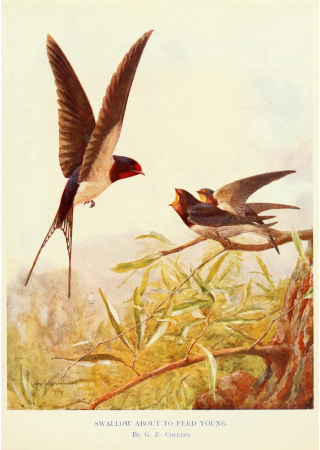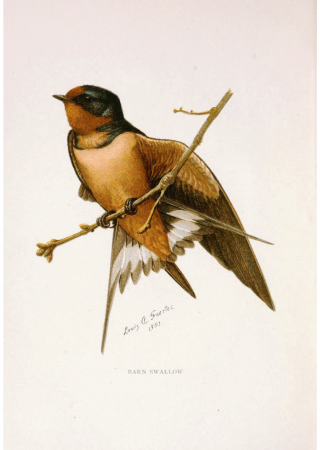Barn Swallow
- …their forked tail allow swallows to maneuver rapidly in flight?
- …barn swallows are enduring flyers, and can cover several hundred kilometers in one flight?
- …young swallows do not have long tail feathers?
- …after leaving the nest, young swallows are still accompanied by their parents for several days and taught to hunt?
- …barn swallows usually lay two clutches of eggs per year, and if they lay a third, the young generally do not have time to mature?
- …swallows differ from their relatives, martins, in a red spot on the breast and head, and the long tail feathers?
Swallows are well-known migratory birds. Spring through fall they spend in Europe, Asia and North America, while winters are spent in Africa, India, China, Indonesia and South America. Swallows build semi-spherical nests from mud, grass and feathers, with an opening at the top. Eggs, usually four or five, are laid from May through September, and take 14 to 16 days to hatch. Males mostly spend this time hunting, but will occasionally trade duties with the female and sit on the eggs. After hatching, parents care for the young for around three weeks. In the fall, before migration, swallows congregate in huge groups, spending days sitting on power lines and nights in reeds and rushes. Swallows migrate in groups. After returning from winter quarters, older birds return to their nests, while young birds build new ones. Average lifespan for a swallow is four years.





